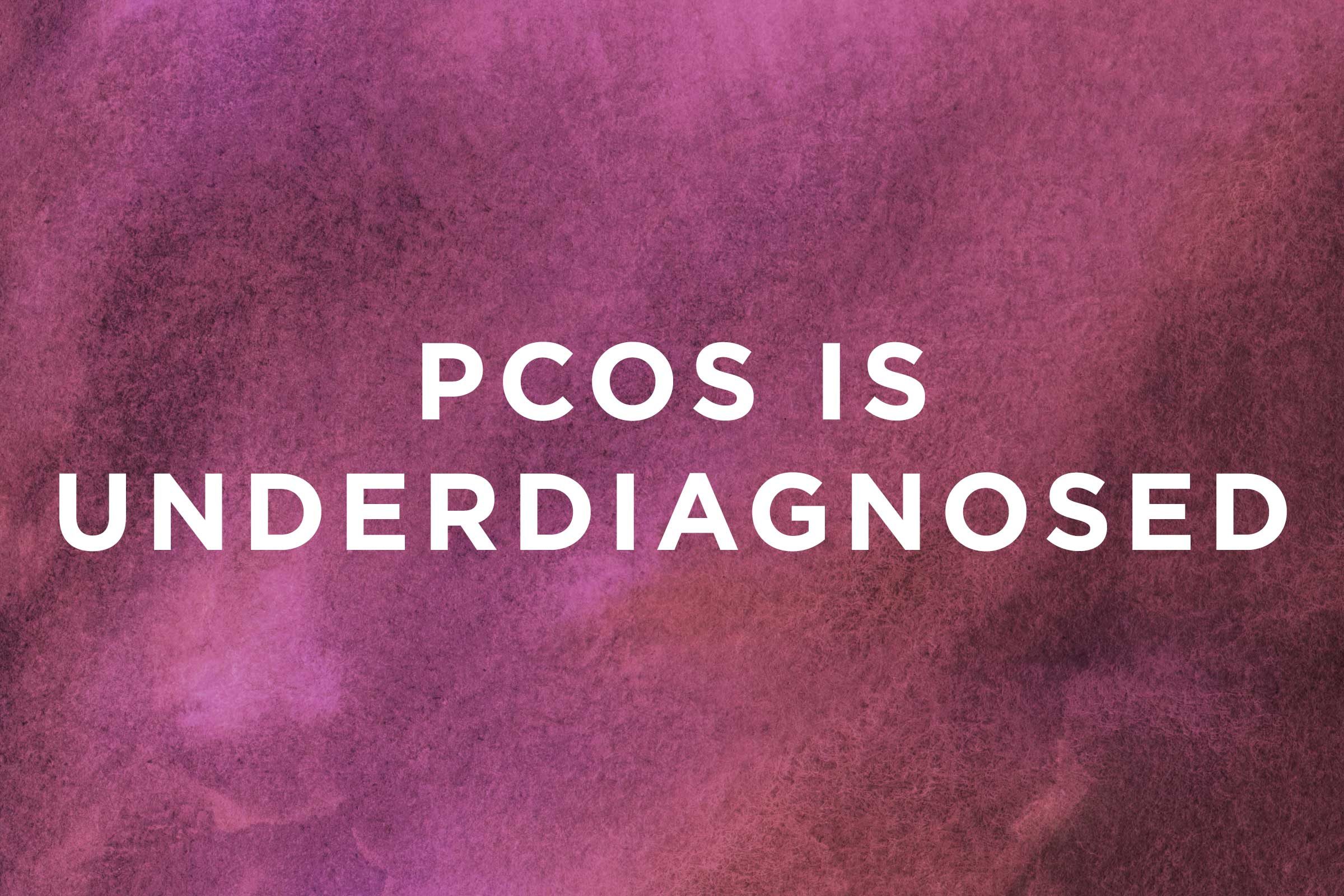
PCOS is seriously underdiagnosed
About 7 million U.S. women have polycystic ovary syndrome (PCOS), which results when excess insulin increases the production of androgens (male hormones). It’s the most common hormonal disorder among women of reproductive age—as many as one in ten will develop PCOS—yet shockingly, it’s estimated that more than half don’t know they have it. “I see women regularly who’ve remained undiagnosed their entire lives,” says Fiona McCulloch, ND, a naturopathic doctor in Toronto and author of the forthcoming book 8 Steps to Reverse Your PCOS. That’s scary, considering that PCOS is linked to diabetes (one recent study from Monash University in Australia showed that women with PCOS—even if they’re young and not overweight—are five times more likely to develop type 2 diabetes) and heart disease, the leading killer of women. Being treated for PCOS can safeguard your life, so it’s important to recognize PCOS symptoms, which can vary from woman to woman. Here are some of the most common.

MIA periods
Women with PCOS have higher-than-normal levels of androgens (testosterone is the most well-known), which can slow down your ovaries and interfere with ovulation. “When ovulation is inhibited, your period, which comes two weeks after ovulation, will also arrive late—and in some cases, not at all,” says Dr. McCulloch. For women with irregular periods and PCOS, periods are often irregular from the start. In others, periods become irregular years later. According to Dr. McCulloch, women with PCOS symptoms experience irregular periods more often when they’ve gained weight or experienced a lot of stress. Here are other 11 medical reasons you might miss your period.

Fertility issues
PCOS is the most common cause of female infertility. Conception is difficult for a variety of reasons. First, if you’re not ovulating regularly, it can be difficult to detect when you’re most fertile—and ovulation tests are often ineffective in PCOS because the hormone they pick up can be too high across the cycle, causing false positives, explains Dr. McCulloch. Also, because periods are irregular, there are simply fewer periods of fertility. Women with PCOS have challenges with the quality of their eggs as well, due to inflammation and hormonal shifts within the ovaries. The good news? “Women with PCOS often have an abundance of eggs, so it’s often just a matter of time until pregnancy is achieved, particularly with the right treatment,” says Dr. McCulloch. Watch for these other surprising reasons you’re having trouble getting pregnant.

Hair growing where you don’t want it (and not growing where you do)
An overabundance of male hormones can result in hirsutism, when excessive amounts of hair grows on areas where men typically have hair, including the face, chest, stomach, back, thumbs, or toes. “This hair is often coarse, so removal can be a challenge and a major source of stress,” says Dr. McCulloch. It’s estimated that up to 90 percent of women with hirsutism have PCOS. The male hormone testosterone is also involved in hair loss, another common problem in PCOS. “Testosterone is converted into a strong androgen known as DHT within the scalp, and DHT is the mortal enemy of your hair follicles,” Dr. McCulloch explains. “It shrinks and damages them, causing hair to enter the resting phase of growth, where it soon falls out.” Thinning is often seen at the frontal area, just behind the hairline, but it can also be diffuse, with loss all over the head and a widening of the part. Check out these other medical reasons for excessive body hair.

Acne and other skin problems
Elevated levels of androgens, which increase oil production, can lead to a host of dermal dilemmas, including dandruff and acne. Two signs acne is related to PCOS symptoms: It’s along the jaw and is resistant to treatment or comes back after taking strong drugs like Accutane. Two other common skin symptoms—acanthosis nigricans and skin tags—are related to insulin resistance. Acanthosis nigricans is a dark, velvety discoloration that’s most commonly seen in the crease behind the neck, under the arms, or in the creases of the thighs. “Acanthosis nigricans can make your skin look ‘dirty,’ but it doesn’t wash off—no matter how hard you scrub,” says Dr. McCulloch. Skin tags are little, flesh-colored flaps of skin that often appear on the neck, chest, and armpits. (Find out how to clear up hormonal acne for good.)

Snug jeans
Women with PCOS symptoms tend to gain weight easily, and losing weight can be exceptionally challenging. This is due to insulin and leptin resistance, two of the central factors involved in PCOS. “Insulin resistance causes your body to store fat more readily, and leptin resistance makes your brain think you’re in starvation mode—messing with your hunger and fullness signals,” says Dr. McCulloch. With insulin resistance, weight is easily gained around the abdomen, and this type of fat is the riskiest when it comes to heart health. Try these effective ways to lose weight if you have PCOS.

Sleep apnea
PCOS is strongly linked to sleep apnea, a potentially serious condition in which your breathing repeatedly stops and starts while you’re sleeping. Sleep apnea can lead to high blood pressure, heart disease, obesity, and mood changes. In one Pennsylvania State University study, PCOS patients were 30 times more likely than control subjects to suffer from breathing difficulties that occur during sleep, including sleep apnea. “Women with PCOS who are the most insulin resistant are more likely to suffer from sleep apnea,” says Dr. McCulloch. Signs you have sleep apnea: You snore loudly and feel tired even after a full night’s sleep. Watch out for these other symptoms of sleep apnea.

Ovarian cysts
Though the name PCOS implies that ovarian cysts are central to the condition, they’re not a required factor—and emphasizing cysts can cause many women to remain undiagnosed, says Dr. McCulloch. It’s important to know that the cysts in PCOS symptoms are not typical ovarian cysts, but are partially developed follicles, where the egg lives until it’s released during ovulation. “They stall in the process of preparing for ovulation,” explains Dr. McCulloch. Younger women are more likely to have these little “cysts” whereas older women may not have them as often. On an ultrasound, they will often be described as “multiple small follicles.” These are the period problems you should never ignore.

Anxiety or depression
A recent meta-analysis published in the journal Human Reproduction found consistently higher levels of emotional distress in women with PCOS symptoms when compared to controls. Psychological issues like depression, panic disorder, obsessive-compulsive disorder, and bipolar depression are related to a variety of underlying causes. For starters, “PCOS is a stressful condition to have, and with its side effects of hirsutism, acne, weight gain, infertility, and irregular cycles, it’s certainly no surprise that women with PCOS often struggle psychologically as well,” notes Dr. McCulloch. Anxiety and depression are also associated with changes in cortisol levels, a common hormonal effect of PCOS. Don’t miss these other silent signs of a hormone imbalance.